Have you ever wondered if you can microwave Pyrex? It’s a popular home question because Pyrex appears to be so durable. Let’s get down to brass tacks for heating Pyrex dishes in the microwave. By the end, you’ll be a pro at preheating your bakes or reheating leftovers in no time.
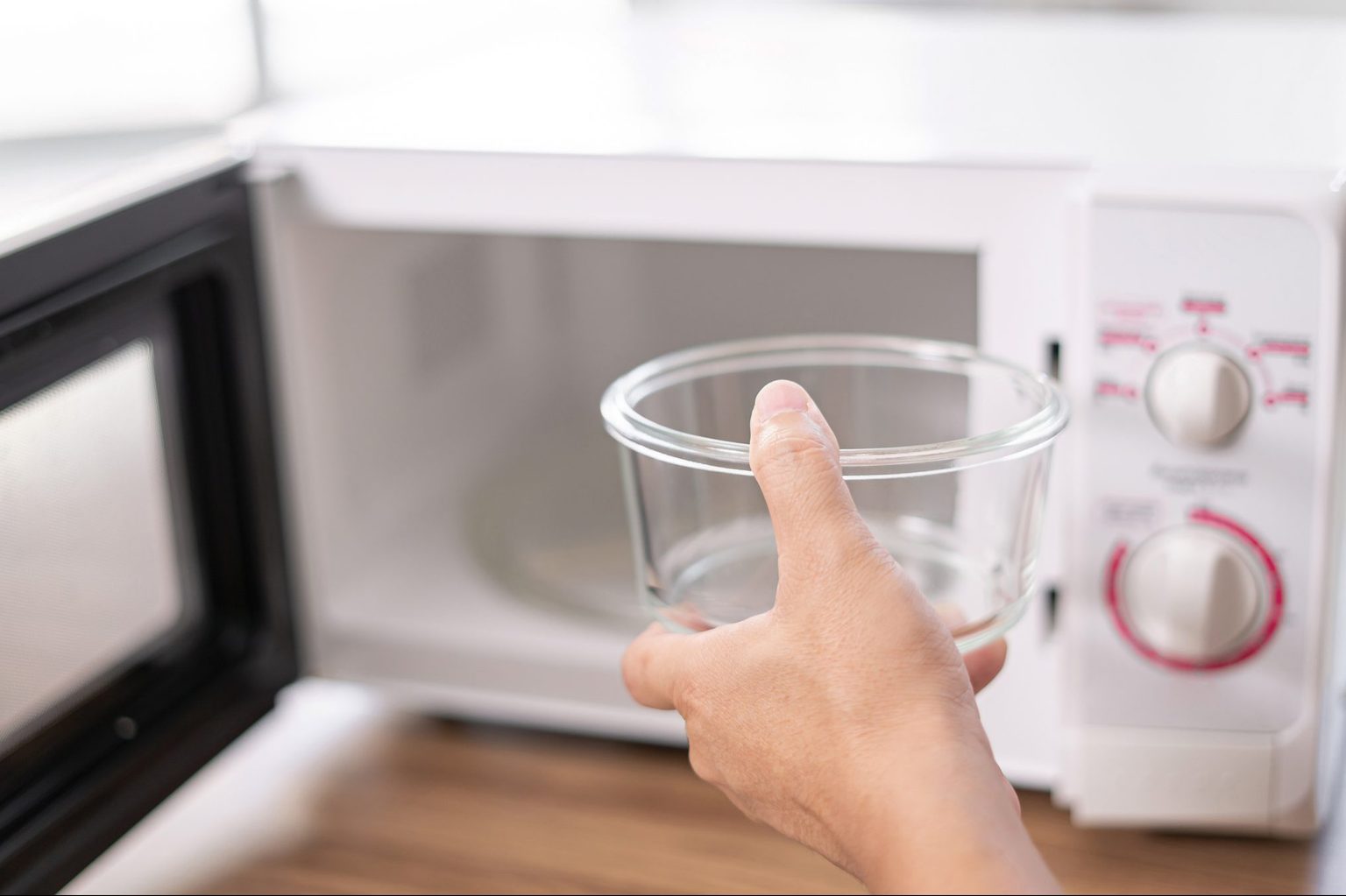
What is Pyrex?
Pyrex is a brand of glassware made from tempered soda lime glass. It was invented by Corning Glass Works in 1915 and was noted for its superior heat resistance versus normal glass.
Pyrex glass has a high boron concentration, which results in a low coefficient of thermal expansion. This means that when heated or cooled, Pyrex glass expands and shrinks less than standard glass. As a result, Pyrex can survive temperature extremes that would cause normal glass to break or shatter.
This thermal shock resistance makes Pyrex oven, freezer, and microwave safe in most instances. However, there are still limitations, so proper use is key.
Is Pyrex Microwave Safe?
In short, yes, Pyrex is normally microwave safe. Pyrex’s borosilicate glass and tempering technique make it sturdy enough to be heated in the microwave without causing safety concerns.
However, Pyrex is not entirely resistant to heat damage. Using very old or broken Pyrex, heating it incorrectly, or exposing it to significant temperature swings can all cause it to break or shatter.
Can You microwave Pyrex Lids?
If you follow these guidelines, you can safely microwave Pyrex lids. The lids are produced using a different soda-lime glass composition than the Pyrex vessels. This makes the lids more likely to shatter due to heat stress.
How to microwave Pyrex lids safely:
- Before microwaving, check for chips, cracks, or weak spots. Do not use damaged lids.
- Never microwave the lids by themselves.
- Remove the lid halfway through heating and stir the meal. This prevents too much steam from accumulating.
- Take care when removing the cover after microwaving, as residual steam may still escape.
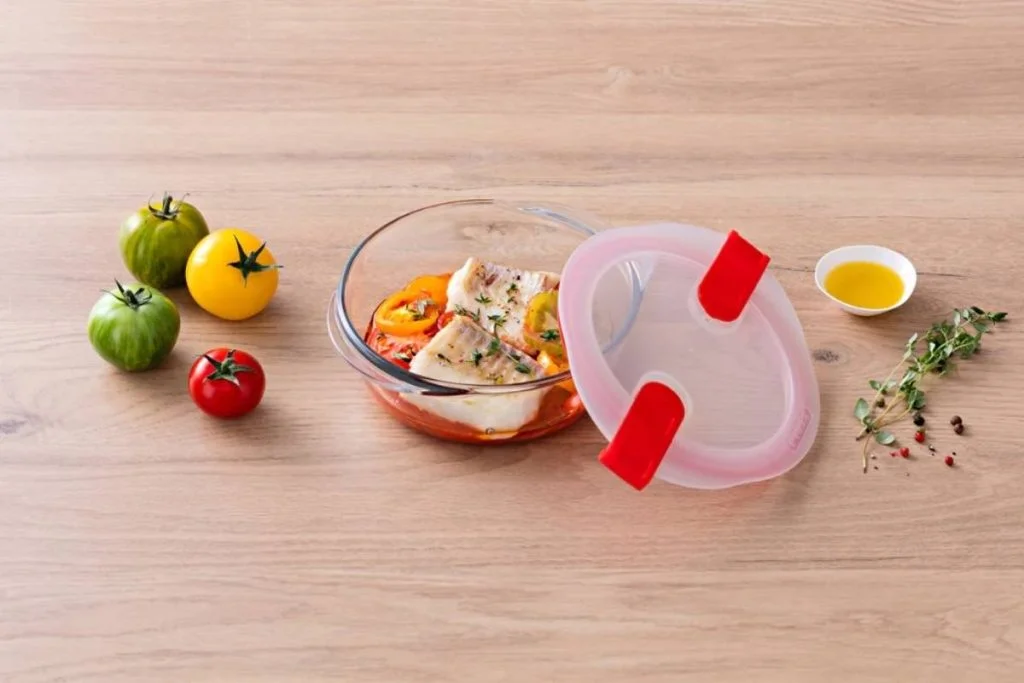
Can You Microwave Pyrex Glass?
For sure, you can microwave Pyrex glass plates and bakeware. Pyrex pie plates, casserole dishes, measuring cups, and mixing bowls are all microwave-safe.
Pyrex glass’s thermal qualities make it resistant to shattering during microwave heating. Simply avoid placing cold Pyrex glass directly into a hot microwave, as the fast temperature shift might result in cracks or shattering.
It’s also crucial not to microwave Pyrex glass with chips, hairline cracks, or severe scratches. Flaws in the glass structure reduce its strength.
And as always, use lower power settings and heat food gradually.
Can You Freeze and Reheat Pyrex?
Yep, that’s one of Pyrex’s special powers. The thermal shock resistance of Pyrex makes it possible to go from extreme cold in the freezer to the high heat of the microwave safely. This makes Pyrex incredibly convenient for storing and reheating leftovers.
However, best practice is to thaw frozen Pyrex dishes briefly before microwaving. Take Pyrex out of the freezer and let it stand for a few minutes before reheating. This helps prevent drastic temperature fluctuations.
Avoid putting piping hot Pyrex straight into the freezer after microwaving. Allow it to cool down closer to room temperature first. Always transition Pyrex gradually between temperature extremes.
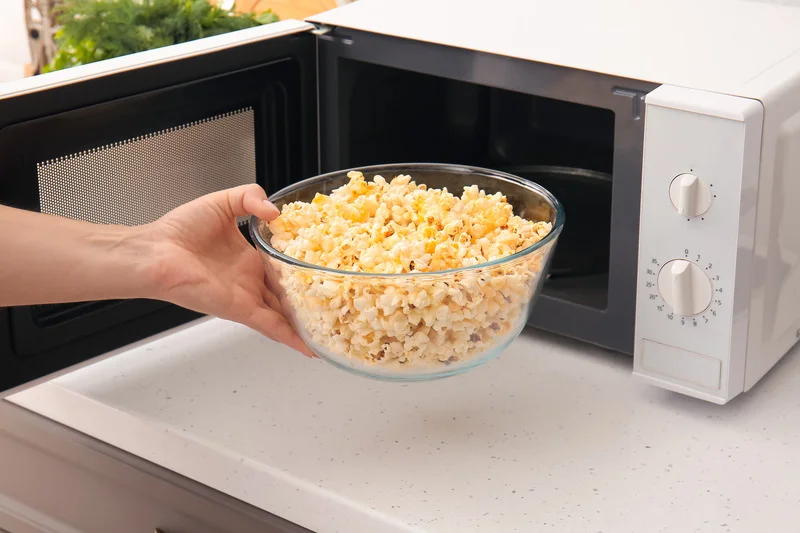
Do’s While Using Pyrex in the Microwave
Follow these guidelines to use your Pyrex containers safely in the microwave:
1. Preheat Your Dish
If you’re cooking something cold in Pyrex, warm the empty dish for 1-2 minutes at 50% power beforehand. This prevents thermal shock.
2. Know Your Wattage
Use 50-80% power for microwaves with more than 1100 watts and 30-50% for lesser wattage models. High power can quickly overheat Pyrex.
3. Use Low Heat Settings
Cook food in quick bursts at lower heat settings rather than extended cooks at high heat. More slow heating prevents cracking.
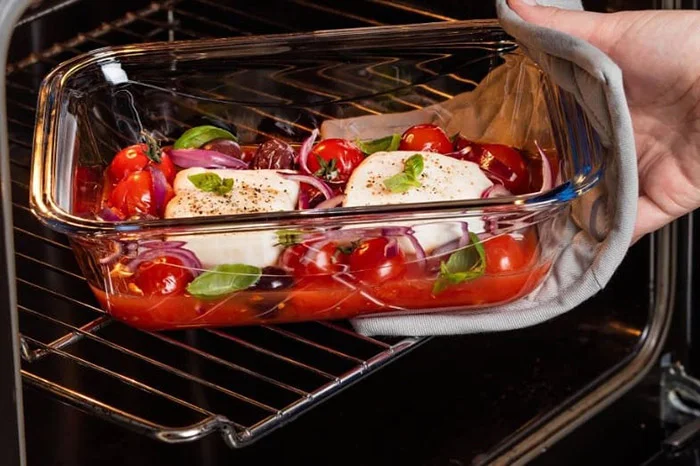
Dont’s While Using Pyrex in the Microwave
Just as important as the do’s are the don’ts:
1. Don’t Use Old Dishes with Cracks or Chips
Small faults reduce the strength of Pyrex when heated and can cause it to shatter in the microwave.
2. Don’t Leave Unattended Foods Inside of Microwave
Keep an eye out for overflowing or overheating, which can cause damage to your microwave or Pyrex.
3. Don’t Place Dishes Too Close Together
Overcrowding dishes limits efficient heat circulation. Leave 1-2 inches between them.
4. Don’t Use Metal Utensils
Metal can ignite, burn, or cause arcing damage within the microwave. Use only microwave-safe materials in microwaves.
5. Don’t Heat an Empty Pyrex Dish
Always keep food or fluids in the dish to absorb microwaves and avoid harm. Heating empty Pyrex can result in an overheated, weaker area, which promotes breaking.
How to Microwave Pyrex Safely?
Follow these safety guidelines when microwaving Pyrex:
- Check for chips, cracks, and evidence of deterioration. Do not use compromised Pyrex in the microwave.
- Preheat empty plates briefly before adding food to avoid temperature shock.
- Use lower power settings and heat food in little increments.
- Leave adequate room between plates and do not overcrowd.
- Keep an eye on the microwave to avoid overflowing or overheating.
- Let cooked meal sit in Pyrex for a few minutes before serving.
- Avoid exposing freshly microwaved Pyrex to excessive cold or heat right soon.
For How Long Can I Microwave Pyrex?
There is no time limit on how long Pyrex can be microwaved safely. It is more about gradually heating foods rather than heating them extremely quickly. Nonetheless, for reference:
- Liquids: Heat for 2-3 minutes at 50% power, then pause and repeat in 1-minute intervals.
- Leftovers: Reheat for 3-5 minutes, depending on quantity, at 50% power. Stir halfway.
- For raw dishes, cook covered for 5-10 minutes at 50% power, depending on the recipe. Stir occasionally.
- Empty dishes: Preheat for 1-2 minutes on 50% power before adding food.
The idea is to use suitable time and power settings to avoid thermal stress cracks. Heat dishes in many short sessions rather than one big burst at high heat.
Cleaning and Care Tips for Microwave-Safe Pyrex
- Allow dishes to fully cool before cleaning to prevent thermal shock from hot and cold water.
- Handwash using mild dish soap and soft cloth. Avoid abrasive scouring pads.
- Check for scratches, chips, and cracks during washing – immediately stop using if present.
- Avoid putting hot Pyrex into cold water or cold Pyrex into hot water.
- Store Pyrex away from extreme temperature fluctuations.
- Don’t use damaged or vintage Pyrex lacking microwave-safe labels in the microwave.
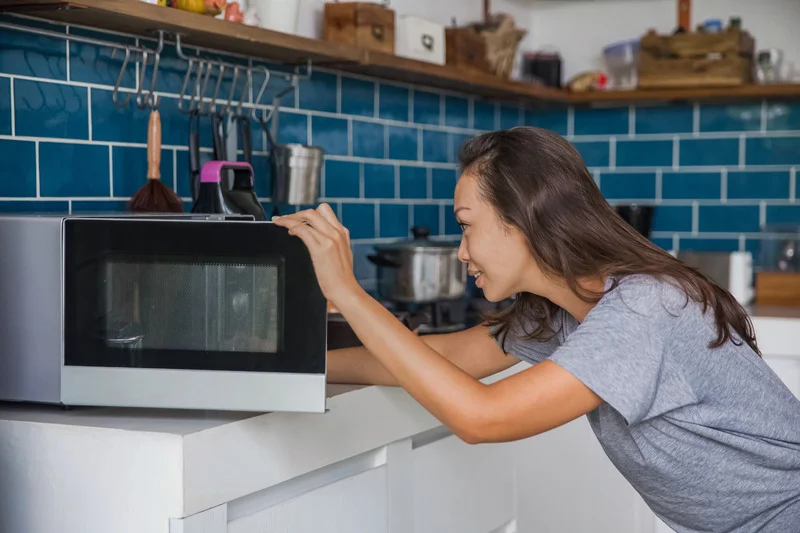
Conclusion
Finally, when used correctly, Pyrex is a practical and multipurpose microwave safe alternative. Following safety requirements and best practices allows you to enjoy the convenience of microwaving with Pyrex without sacrificing safety or quality. So, the next time you ask, “Can you microwave Pyrex?” know that with the proper safeguards, you can do so with confidence.
FAQs
Pyrex is made of glass.
If the stress is too extreme, the bowl’s structure will fail, causing a spectacular shattering effect. The main way to avoid this effect is to be mindful of how quickly you change the temperature of Pyrex.
Other cookware manufacturers who don’t use the heat-resistant borosilicate glass that the original manufacturer does (more on that below) produce lowercase “pyrex.” Since, pyrex (emphasis on the lowercase letters) is mostly made from soda-lime glass, it is definitely not recommended for use in the oven or microwave.
Yes, you can microwave most glass items as long as they are labeled “microwave safe”. Kitchen wares, such as glass items, that have the “microwave safe” label are made of materials that are safe to be used in the microwave.
Can Pyrex go in the oven and microwave? Yes, Pyrex glassware is safe to use in the oven and microwave. Pyrex is made of a special type of glass called borosilicate glass, which is designed to withstand extreme temperature changes. This makes it suitable for use in the oven and microwave, as well as on the stovetop.
temperature : 300°C Oven compatible : Yes Microwave compatible : Yes Freezer compatible : Yes Refrigerator compatible : Hobs compatible : No. Pyrex® Classic glass, a kitchen classic! Pyrex® glass, since 1915, offers a complete solution to all cookware requirements from preparation, to baking and storing.
Sources:
- Is Pyrex Microwave Safe? The Do’s and Dont’s
- Is Pyrex Microwave Safe?
- Can You Microwave Pyrex?
- Is Pyrex Safe In The Microwave
- Can You Microwave Pyrex?
- Is Pyrex Microwave Safe? Expert Guide to Essential Do’s and Don’ts
- Is Pyrex Microwave Safe? Do’s and Don’ts!
- Is Pyrex Microwave Safe?
- Is Pyrex Microwave Safe? The Quick Guide to Microwaving Pyrex Products
- Is Pyrex Microwave Safe?
- Is Pyrex Microwave safe?
- Are Pyrex Glass Jugs Microwave Safe?
- Is Pyrex Microwave Safe?
- Is Pyrex Microwave Safe
- Can You Microwave Pyrex Glassware?
- Can You Microwave Pyrex? (And Pyrex Lids?)
- Can You Microwave Pyrex? Safety Tips & Tricks
- Using Pyrex in the Microwave | Easy Guide
- Can Pyrex Go From Freezer to Microwave?